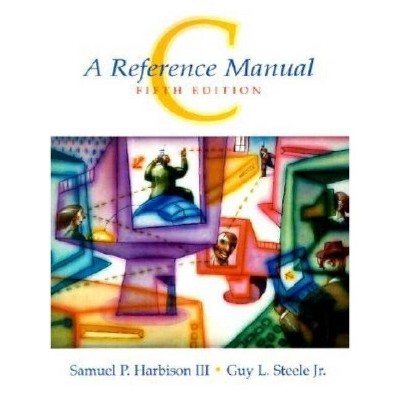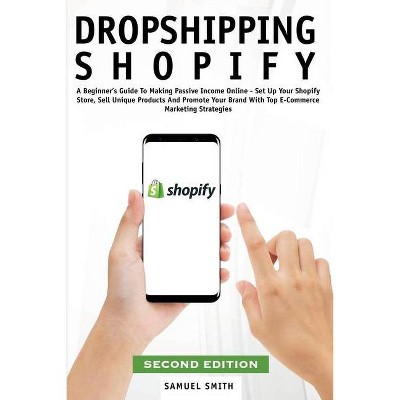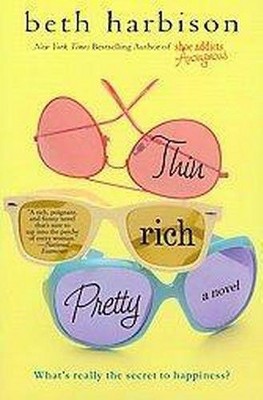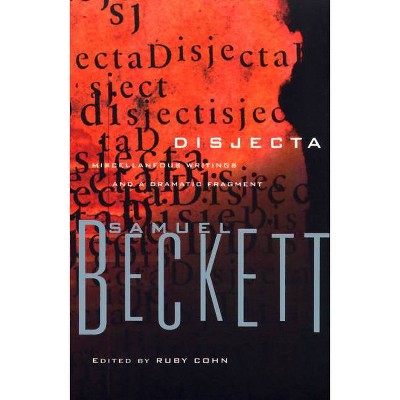C - 5th Edition by Samuel Harbison & Guy Steele (Paperback)

Similar Products
Products of same category from the store
AllProduct info
<p/><br></br><p><b> About the Book </b></p></br></br>This thorough guide provides advice on how to write C code that is compatible with C++. The emphasis is on writing clean C programs, and the book illustrates how to create programs that are maximally portable and reusable in both C and C++ environments.<p/><br></br><p><b> Book Synopsis </b></p></br></br><p>This authoritative reference manual provides a complete description of the C language, the run-time libraries, and a style of C programming that emphasizes correctness, portability, and maintainability. The authors describe the C language more clearly and in more detail than in any other book. </p><p/><br></br><p><b> From the Back Cover </b></p></br></br><p>This best-selling, authoritative reference manual provides a complete description of the C language, the run-time libraries, and a style of C programming that empha_sizes correctness, portability, and maintainability. </p> <p>Describing the C language more clearly and in more detail than any other book, authors Samuel P. Harbison and Guy L. Steele Jr. provide in a single manual: </p> <ul> <li> Standard C (1999) - the new revison of the C Standard supports complex and Boolean types, variable length arrays, precise floating-point programming, and new libraries for portability and internationalization. </li> <li> Standard C (1989)- the version of C used by most of today's programmers. </li> <li> Traditional C-common practice before 1990, with millions of lines of code in use every day.</li> <li> C++ compatible C-code that can be used as C or C++.</li> <li> The complete C run-time libraries for all C versions. </li> </ul> <p>C: A Reference Manual is the only book that describes all the details of C-past and present. It is the single must-have reference for all C programmers and implementors. </p> <p>Thoroughly revised and updated, the expanded Fifth Edition includes a complete description of the latest C Standard, ISO/IEC 9899:1999, with its powerful language extensions and new libraries. </p> <p>New! Visit the Web site. www.CAReferenceManual.com contains source code for the longer examples in the book, expanded discussions on language issues, the latest ISO/IEC language corrigenda, and links to other C resources.</p><p/><br></br><p><b> About the Author </b></p></br></br><p> From 1996-present Harbison led SDS infrastructure team and defined a software framework architecture across all TI DSPs and dev't tools, worked to make it fit with TI businesses, help negotiate alliances and acquisitions to make it happen. (Rollout and proudcts will appear in 1998.) Developed long-term vision in SDS and helped develop technology roadmaps. From 1995-96 as CTO Harbison set Tartan's technical direction. He defined and ran a new engineering organization and product development process that gave project managers more authority. He helped spearhead Tartan's long-term growth strategy by defining new products for C and Assembly programming on DSPs. Harbison managed the technical due diligence for TI merger. In 1992, he founded and directed the C/C++ Division, Tartan's first business unit and key to diversifying into commercial markets. Developed first PC-hosted products and first C++ product, for TI DSPs. Created a line of DSP math functions. Pioneered world-wide distribution channels using TI and 3rd parties. (Direct sales used elsewhere.)In 1990, Harbison founded a company, Pine Creek Software, funded by Digital Equipment Corp. to create a market for the Modula-3 programming language. Wrote the first Modula-3 textbook, exhibited at trade shows, wrote software, and published a newsletter. Still recognized as an authority, he was contracted by CRC in 1997 for a Modula-3 chapter in forthcoming Handbook of Object Technology.From 1982-1989, Harbison held various senior positions at Tartan, including Vice President. He led the software QA team & developed company-wide QA policies (1989). He managed several technology groups (1985-89). He was the project manager for Tartan's first commercial product (1984), and program manager for a contract with IBM to develop compilers for their RT PC (precursor to RS/6000). He designed and led development of Tartan's debugger (AdaScope). He developed the C compiler front end, and other internal tools (1981-1984). From 1980-82 Harbison was part of the SPICE research project at Carnegie-Mellon, which evangelized the concept of a "personal workstation" before most companies thought it was feasible. From 1974-80, he helped to develop the Hydra object-oriented, multiprocessor operating system, whose concepts were later used in the Intel 432 microprocessor.</p>
Price History
Cheapest price in the interval: 84.99 on October 28, 2021
Most expensive price in the interval: 94.99 on February 4, 2022
Price Archive shows prices from various stores, lets you see history and find the cheapest. There is no actual sale on the website. For all support, inquiry and suggestion messagescommunication@pricearchive.us




















